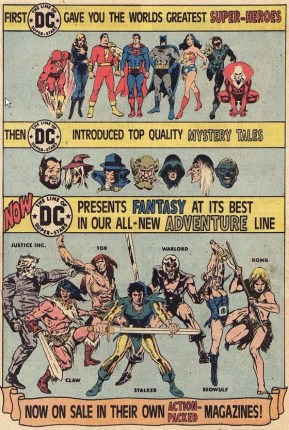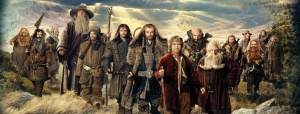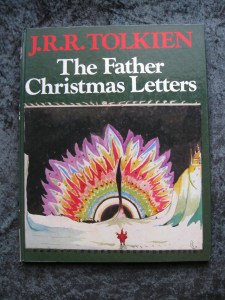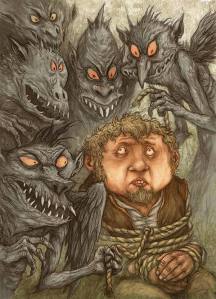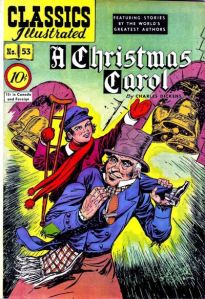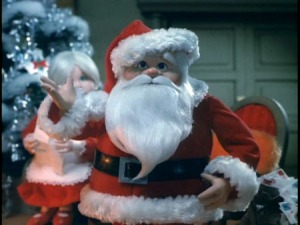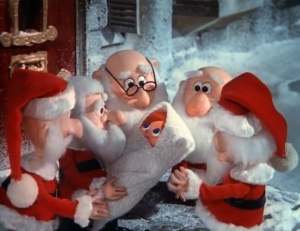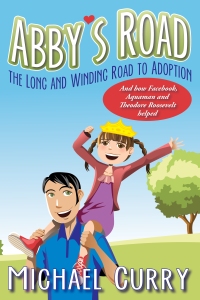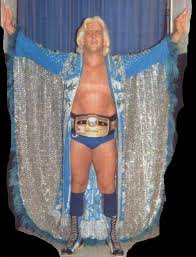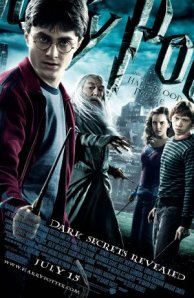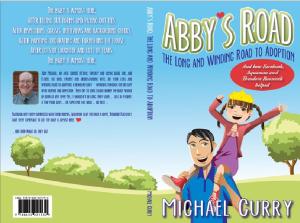A Review of A Christmas Carol
The Nebraska Theater Caravan, Fox Theater, St. Louis, Missouri

On December 13, 2014 my wife and I attended a performance of “A Christmas Carol” at the Fabulous Fox Theater in St. Louis, MO as performed by the Nebraska Theater Caravan.
“The Nebraska Theater Caravan is the professional touring wing of the Omaha Community Playhouse” says their website: http://www.nebraskatheatrecaravan.org/
“In 1979 the Caravan started touring the Charles Jones adaptation of ‘A Christmas Carol’ nationally with one company touring the Midwest. Three years later in 1982 another company was added to tour the East Coast and a third to tour the West Coast in 1987.”
It was my second trip to the Fox this year – I went this summer with my sister and nephew to watch the Monkees! That blog/review begins here: https://michaelgcurry.com/2014/06/09/come-and-watch-us-sing-and-play-the-monkees-live-in-st-louis/
Before that I had not been to the Fabulous Fox since seeing … “A Christmas Carol” as performed by the Nebraska Theater Company back in 1988 (or 1989)!
I don’t remember much of that production. My sister and father remember is being amateurish. I remember enjoying the music and their handling of the Ghost of Christmas Yet to Come (a huge hulking thing with long arms likely operated by a man inside on a stand with pool cues for arms).
I remember my mother taking our photograph (my sister and I) amidst the holiday-decorated-yet-maintaining-their-Edwardian/Persian splendor of the Fox Theater. That I remember clearly. The play itself? Not so much…
I wonder why I do not remember. In December 1988 I had moved to Carbondale from Springfield ten months prior and worked as an overnight disc jockey. I would have been more looking forward to a solid night’s sleep than an evening’s entertainment. If it were in 1989 I had just started law school and recovering from my first final exams. My lapse of memory is more explicable in that case…
If it were as bad as my sister and father remembered I certainly would have remembered that, too; if only because I would continue to skewer it to this day! I don’t remember my mother discussing it. I imagine she loved it if for no other reason that my father didn’t. And as is always the case with my mother I would give all I have except my wife and daughter to be able to ask her even just that trivial question.
So driving to the theater I worried – what if this thing stinks? I’d be out the cost of tickets, the motel, the cost of gas – just to see a piece of tripe that a high school could do better (to paraphrase my dad)?
I needn’t have worried.
Check the blogs with the Christmas tag and you will see how much I love “A Christmas Carol”. https://michaelgcurry.com/2014/12/04/christmas-reading-a-christmas-carol/
A multi-blog review of many adaptations of “A Christmas Carol” begins here: https://michaelgcurry.com/2012/12/02/131/
I start reading the book every evening of Thanksgiving, if possible, and can usually finish it by that Sunday night (I used to be able to read it in one sitting pre-daughter); and love watching all the adaptations. Even the stinkers. I was looking forward to seeing as good stage production of the story – what would they include? Exclude? Did they add anything as so many of the movies/TV specials do?
This version is a musical. Not a musical as in the excellent 1970 movie with Albert Finney and Alec Guinness as Marley (every time I see his entrance I cannot help but say, “Go to Degobah, Scrooge, and learn from Yoda … sorry, wrong ghost…”) in which the lines are sung and/or a song conveys the feeling of the song. This musical is peppered with carols from the time – Victorian England (and before).
The songs were the highlight of the show – it was the only part of the prior production I recall, remember – opening the curtain with “God Rest Ye Merry, Gentlemen” – a canny choice (I don’t mean that in a bad way). The main cast rarely joined in the carols – it was the background cast – townsfolk, party guests, etc.
The song list included Gloucestershire Wassail (a song prominent in the pitch-perfect George C Scott television Carol), The Boar’s Head Carol (my wife knew this rare tune from her madrigal days), the usual choices of The Holly and the Ivy and Here We Come A-Wassailing. Dancing Day was a treat – a song one rarely hears on the radio amidst the third-airing-in-as-many-hours of Feliz Navidad … the only time I heard it is when I played it myself as a DJ. Particularly Paul Winter’s version on my NPR show. Lovely tune!).
Coventry Carol was especially beautiful.
The sets were lovely and well-made. There were four basic sets: the curtain opened on the Londontown street on which set the office of Scrooge and Marley and their neighbor, a toy shop. A soup cart and a woolen clothier cart bookended the entryway into the neighborhood. The poulterer was on the backdrop.
Twirling the storefront of Scrooge and Marley revealed the inside of Scrooge’s office. Two tables and chairs were wheeled in.
The toy store was turned revealing Scrooge’s fireplace. The same backdrop was used for Scrooge’s office, the Cratchit’s home and Scrooge’s bedroom. Those were wheeled offstage for Fred’s home and Fezziwig’s office (the tables and seats from Scrooge’s office were wisely recycled.
Sets were moved about the stage professionally and without incident. My sister recalls Marley falling against the fireplace which shuddered revealing its plywood-cheapness – much like the walls shuddering while slamming doors on “Plan Nine From Outer Space”. No such thing happened that night.
And costumes were lovely – pure Victorian splendor. It would fit in with any production of Oliver, a Sherlock Holmes or Jack the Ripper tale.
The story itself was adapted very well considering the limited set. The play opens on the Londontown street, as mentioned, with Fred greeting the other businessmen and women in front of his uncle’s counting house. This sets up his generous and friendly nature.
The sets twirl and move to the inside of Scrooge’s office. Here we meet Scrooge and Bob Cratchit. Freezing Bob is threatened with unemployment as he sneaks to the coal bin, Fred and his uncle exchange their unpleasantries, and the two Charity Men (as they are called in the Playbill) are unceremoniously booted with all the familiar dialogue. Child carolers invade the office and are chased off by Scrooge. He physically carries one girl and dumps her in the doorway. “You’ll want the whole day, tomorrow, I suppose …” etc. A twirling of the set allows Scrooge to go outside and demand payment of back rent from the various businessmen and women. “One more day, sir, please.” “It will cost you another half-crown, or I’ll take the entire cart! Sign here…”
To Scrooge’s chambers: Marley’s face appears on the wall thanks to a projection and comes through the fireplace – Scrooge goes to the smoking fireplace and opens the way for his fellow actor. Marley is bathed in keep green. Very well done lighting effect here. They include the toothpick scene deleted from many versions (“… but I see it nonetheless…”).
The Ghost of Christmas Past is played by Kristen Conrad – she is an adult wearing a bright red Victorian dress (she is neither a child nor a crone or a mix as in the book). Young Scrooge, teen Scrooge rescued by sister Fan, Fezziwig’s party (at which Scrooge and Belle become engaged – he gets on his knees at the end of the scene and presents her a ring), Scrooge’s and Belle’s breakup. The only missing bit – and this part usually is – is the “extinguishing” of the Ghost’s light with the huge candle-snuffer. Like some adaptations, Belle is Fezziwig’s daughter – this isn’t in the book but adds more pathos to Scrooge fall into coldness.
The Ghosts and Scrooge travel on his bed. It is the only piece of scenery not pushed or pulled into and out of scenes by the cast. It must have a small electric motor underneath. It was moved throughout quietly and expertly.
The Ghost of Christmas Present was dressed in all his green Father Christmas glory – huge beard, fur-trimmed robe, etc. He even had what looked like real candles on his crown of holly! The Cratchit home, Fred’s party. Missing were the usual suspects in this part of the story (Christmas Present certainly gets short shrift during most tales …): the blessing of poor tables, the political “debate” between the Ghost and Scrooge, the men almost fighting in the street, the coal miners, the lighthouse keepers, the ship at sea and Ignorance and Want.
The Ghost of Christmas Yet to Come was described previously – the businessmen discussing his death (“…only if lunch is provided…”), the Cratchits mourning the loss of Tiny Tim, Scrooge facing his own tombstone. Instead of the scene with the undertaker, washerwoman and charwoman at Old Joe’s fence, it takes place in Scrooge’s room with only the washerwoman and the charwoman stripping the blanket, the bed curtains and Scrooge’s purse from the body lying on the bed.
Scrooge awakes Christmas morning and asks a girl (not a “fine lad”) to buy the prize turkey. During a musical interlude there is a cute scene of the girl “pounding” on the door of the poulterer’s on the backdrop. The poulterer tosses her out twice before she shows him Scrooge’s money – she’s NOT kidding! Scrooge leaves his office and forgives the debt of the businessmen and women on his street. He offers a huge sum to the Charity Men to atone. He sees Fred walking down the street, meets his niece and finally accepts his invitation to dinner. Scrooge, Fred, his wife and the businessmen and women help Scrooge take all the toys and clothing (purchased from his former debtors) to the Cratchits, where he doubles his salary, vows to make Tim well and God Bless Us Everyone.
Here the scene (and the show) ends. The book ends at Scrooge’s office but all those scenes take place at Cratchit’s home. Because of the limitation of the stage, doing those scenes at the Cratchit’s makes sense – and many movie and television adaptations use that tactic as well. It was a canny move and not unexpected. Scrooge offers to pay for a doctor he knows to visit Tim the next day. This has been in a few movies, but not in the book – only that Scrooge vowed to help Tim become better.
This adaptation by Charles Jones is quite good. The variations from the book – the things left out and the things included – are not jolting. Only purists also offended by the film and television adaptations will not like it. Plus the inclusion of authentic carols from the period adds to the pleasantries.
I can’t emphasize how lovely the music and singing is. A Coventry Carol was the highlight of the evening.
The acting was very good, too. This is probably the only fault I found, but my lack of utter enjoyment is solely my own. Let me explain:
I should have known I was not about to see a serious treatise of the book. Most of the other media’s adaptations have bits of humor, yes: George C Scott’s mumbling at the Ghost of Christmas Yet to Come that he is “devilishly hard to have a conversation with…” still makes me laugh out loud. But even then it is subtle.
That this play would have over-the-top humor and that the acting would be melodramatic was a surprise to me. But I soon got over that and once I realized the cast wanted to have fun and wanted us to have fun I enjoyed it. If I wanted to sit in the audience nodding with stern face I would attend Shakespeare-in-the-park.
One issue I could not overcome was the melodrama. The Fox Theater is well equipped with a modern sound system; we can hear you. You don’t have to shout (and in some cases shriek) your lines. There were times Scrooge forgot the sound system and went back to his booming baritone mid-sentence. The playbill said the actor also performed in “1776”. He would have been great cast in any role in my favorite musical – I wonder what he played? My bet? Delaware’s Col. McKeon or South Carolina’s Rutledge.
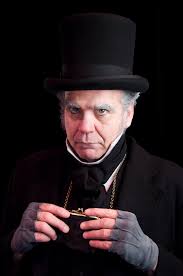
Scrooge was excellently played by Paul Kerr. He is in the photographs I swiped from Google. I liked his Scrooge! A lot! He wasn’t a miserly penny-pincher. Even the best adaptations make that mistake. Scrooge is not Jack Benny having a bad day. Miserliness is only a part of the problem: coldness of the soul is the problem.
Kerr’s Scrooge is mean, impatient and sarcastic as well as being stingy. Dickens describes Scrooge as having not much wit, but Kerr’s does and it fits the character here. His sometimes over-the-top performance fit the fun times had by the cast and audience. The humor was never inappropriate to the play. There were no nods to a modern audience so prevalent in humorous versions of Carol.
“Merry Christmas,” said the carolers. “Merry GO AWAY!” shouted Scrooge from his window. “Leave me alone,” he barked at a persistent beggar. In his chambers he faced away from his fireplace, pulled up his nightgown and rubbed his butt to the warm fire. Who doesn’t do that? He groaned every time he sat down to slurp his gruel.
The other cast also performed splendidly. The Ghosts were glowingly condescending. The Cratchits sympathetic and likable. The few actors who overacted so much as to shock Shatner weren’t onstage long enough to grate and overshadow otherwise fine performances.
Primarily here I mean Jon McDonald. His portrayal of an overzealous Fezziwig (his biggest role) made me tolerate his over-exertion, but his over-the-top silliness as one of the Charity Men made us laugh at him, not his lines.
The screechiness of the washerwoman and the charwoman made their lines nearly indecipherable. If one is not familiar with the story one would have no idea what they were saying.
And I do not know who the character was in the scene at Fred’s house during the party game Yes and No. After many guesses of what manner of undesirable creature Topper was thinking of, an actress took center stage and sang her answer in a high squeal. One presumes she said, “Ebenezer Scrooge” – if only because that was the answer in the story and the rest of the cast reacted as if that is what she said, but her manner of delivery – intending to make me laugh, made me scratch my head at their gibberish.
But as I said, those moments were thankfully few and far between in this lovely performance. It’s the same old story: what’s better than a perfect evening? An otherwise perfect evening with only one thing wrong that I can nitpick the rest of my days…
Children – not small children the age of my daughter, but children old enough to know and appreciate the story – will LOVE it! Even the over-the-top performances (I suspect those are done with the children in mind). And there were lots of youngsters in the audience that night. It was a good mix of ages, gender and social strata in that night’s audiences. Blue jeans and suits and ties all present.
I noted on the way home that it was odd with all the racial trouble St. Louis/Ferguson was facing lately we were looking at an all-white cast, Tim Abou-Nasr as Topper notwithstanding.
And, by the way, Tim did a wonderful job making Topper a pleasant character. In Patrick Stewart’s woefully unloved TV movie version, the producers of the film did something no other version has done with Topper – create a character in “A Christmas Carol” more unlikable than Scrooge. If this were a modern version he would be played by Bill Cosby. But not this version, not played by Tim. Bravo…
My wife said it reminded her of the musical “Scrooge” from 1970. I agree. Scrooge going from store to store collecting the mortgages (I even whispered “Thank you very much” to my wife during this scene); the toys sent to Cratchits on Christmas morning. Well, why not? If you are doing to emulate and be reminiscent of another version of “A Christmas Carol” they picked a good one!
This troupe plays until December 23rd in Colorado, according to their website. They will tour the US next year as they have for many decades. Will they be in St. Louis or Cape Girardeau as they were this year? I hope so!
There is no guarantee it will be the same actors in the same parts, but go see it regardless.
Take your children.
Enjoy the play, enjoy the music, enjoy the holidays…
And God bless us, every one!!
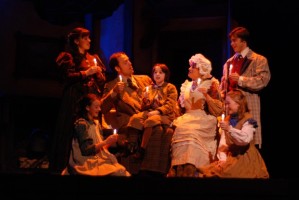
Photographs were obtained through Google images and are copyrighted by their respective holders (not known) and used here under the Fair Use Doctrine as commentary and criticism.
Original material copyright 2014 Michael Curry
